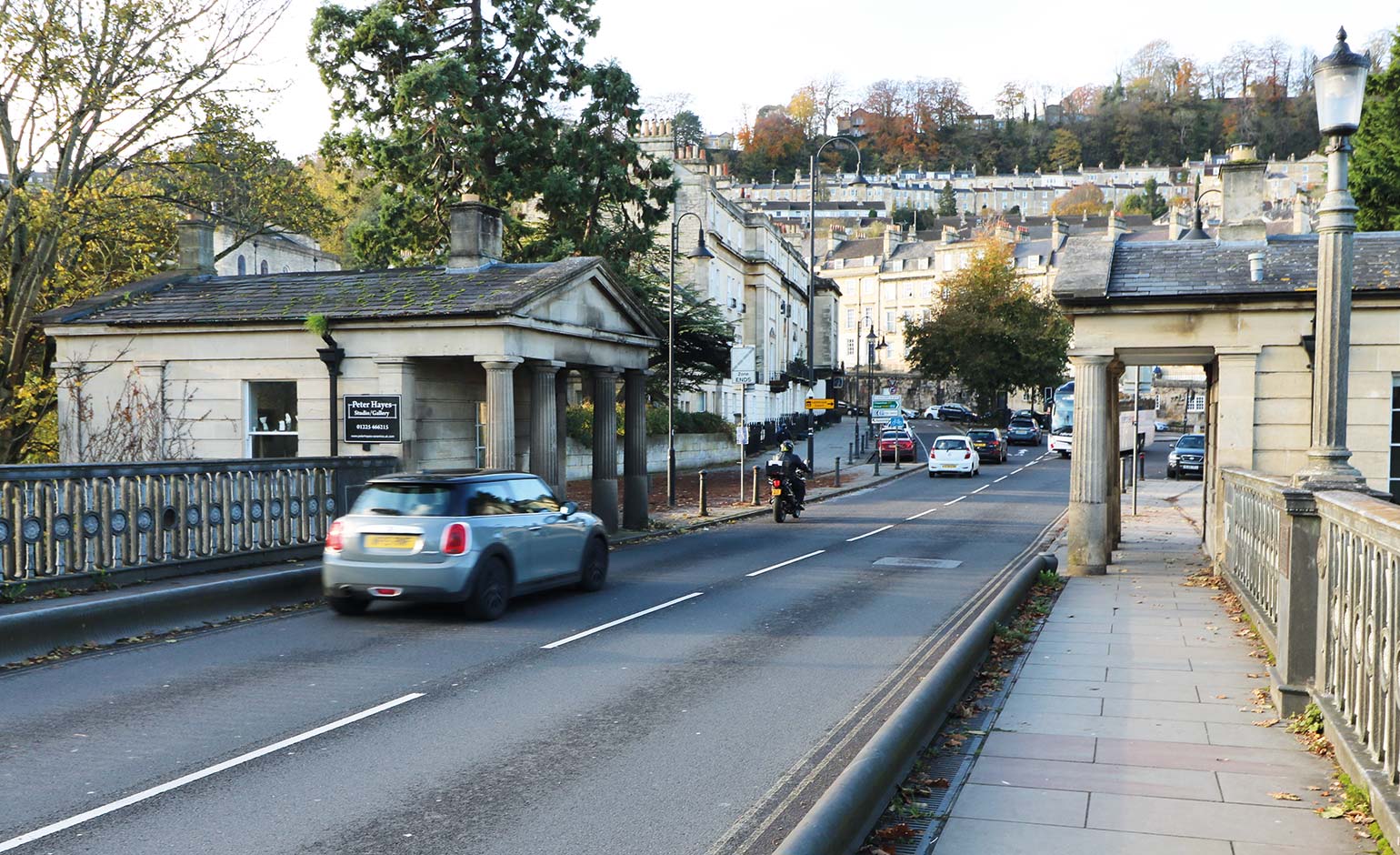Bath’s historic Cleveland Bridge is to temporarily close to all traffic from Monday 28th June for around three months as part of essential repair work to safeguard its future.

Cleveland Bridge in Bath | Photo © Bath Echo
Motorists will be unable to use the route during the closure, but pedestrians, cyclists and emergency services will still be able to cross the river using the bridge.
Work on the £3.8 million project to renovate the Grade II* listed structure began at the start of May, using temporary signals to enable scaffolding to be put in place.
Following the erection of the scaffolding, engineers have been able to gain access to make more detailed structural surveys that have identified faults in the concrete of the bridge.
Councillor Manda Rigby, cabinet member for Transport said: “We apologise for the disruption this closure is likely to cause, however we don’t have any alternative. It is essential repair work and much of it has to be done under a road closure.
“We had hoped to close the bridge at the start of June but it has taken a little longer to arrange the diversion route.
“The only route made available to us was through South Gloucestershire and we want to thank South Gloucestershire Council for agreeing this diversion.”
The diversions for Bath city centre routes during the closure as well as outer diversions for through traffic on the A36 are available on the council’s Cleveland Bridge webpage.
Motorists are advised to familiarise themselves with the diversion and locals are being asked to consider whether they could walk or cycle over the bridge, or use another form of transport around the city instead.
The bridge currently carries around 17,000 vehicles a day. Despite routine maintenance, it needs extensive major structural repairs for it to continue to function safely.
Bath & North East Somerset Council secured the funding for the scheme through the Government’s Highways Challenge Fund.
The bridge will close at one minute past midnight on Monday 28th June and it is anticipated the work could take around three months before reverting to temporary signals.



